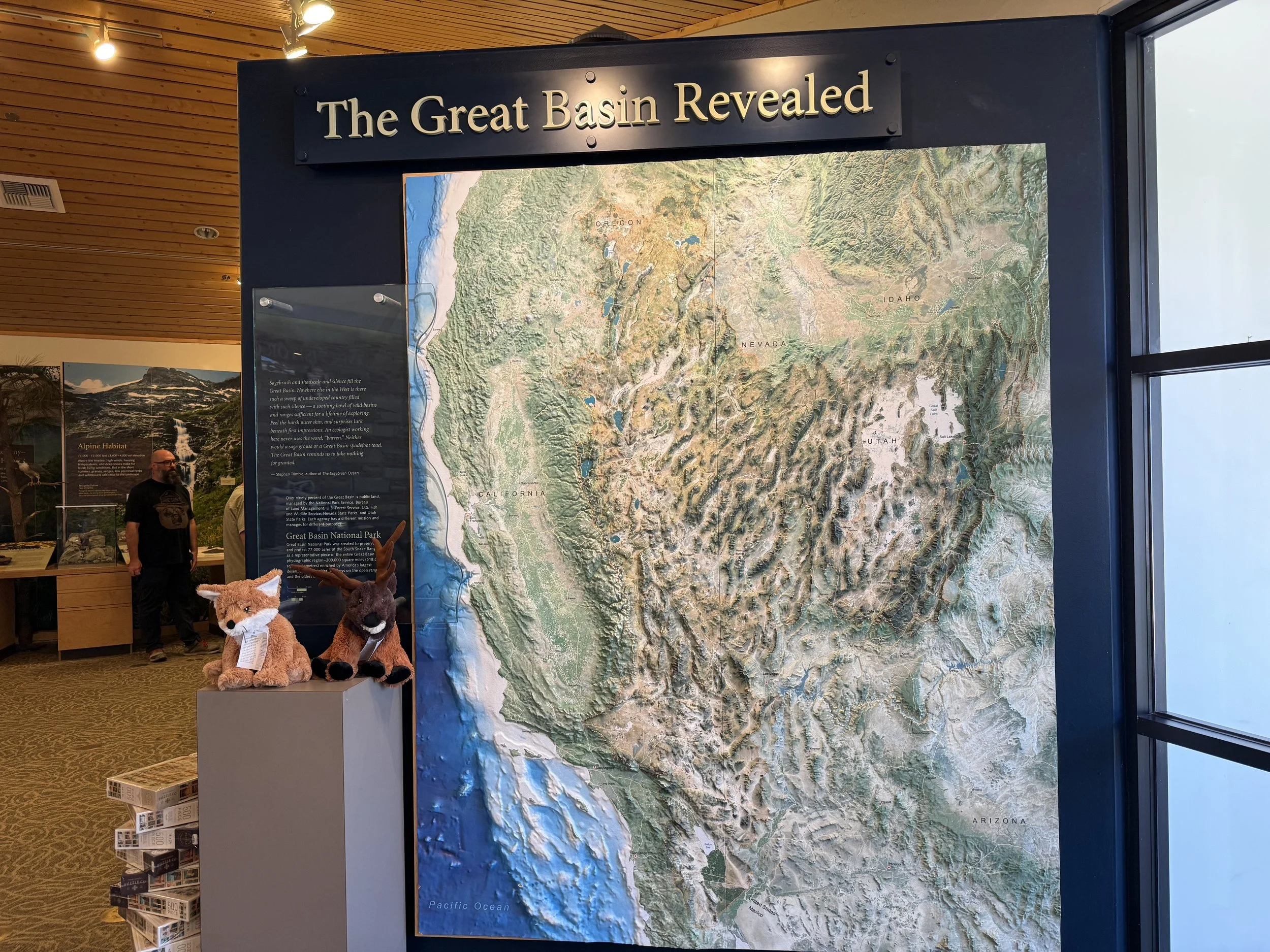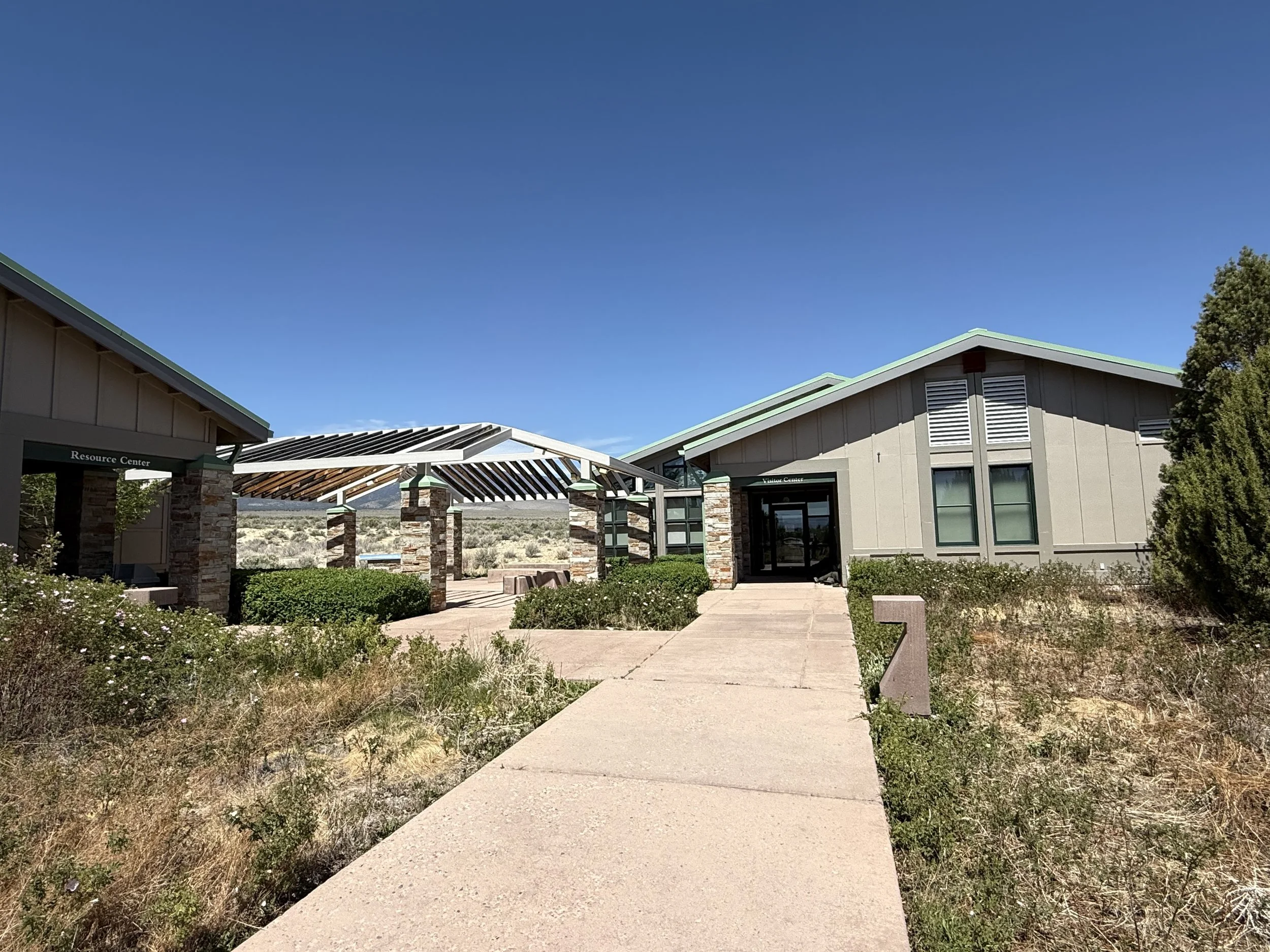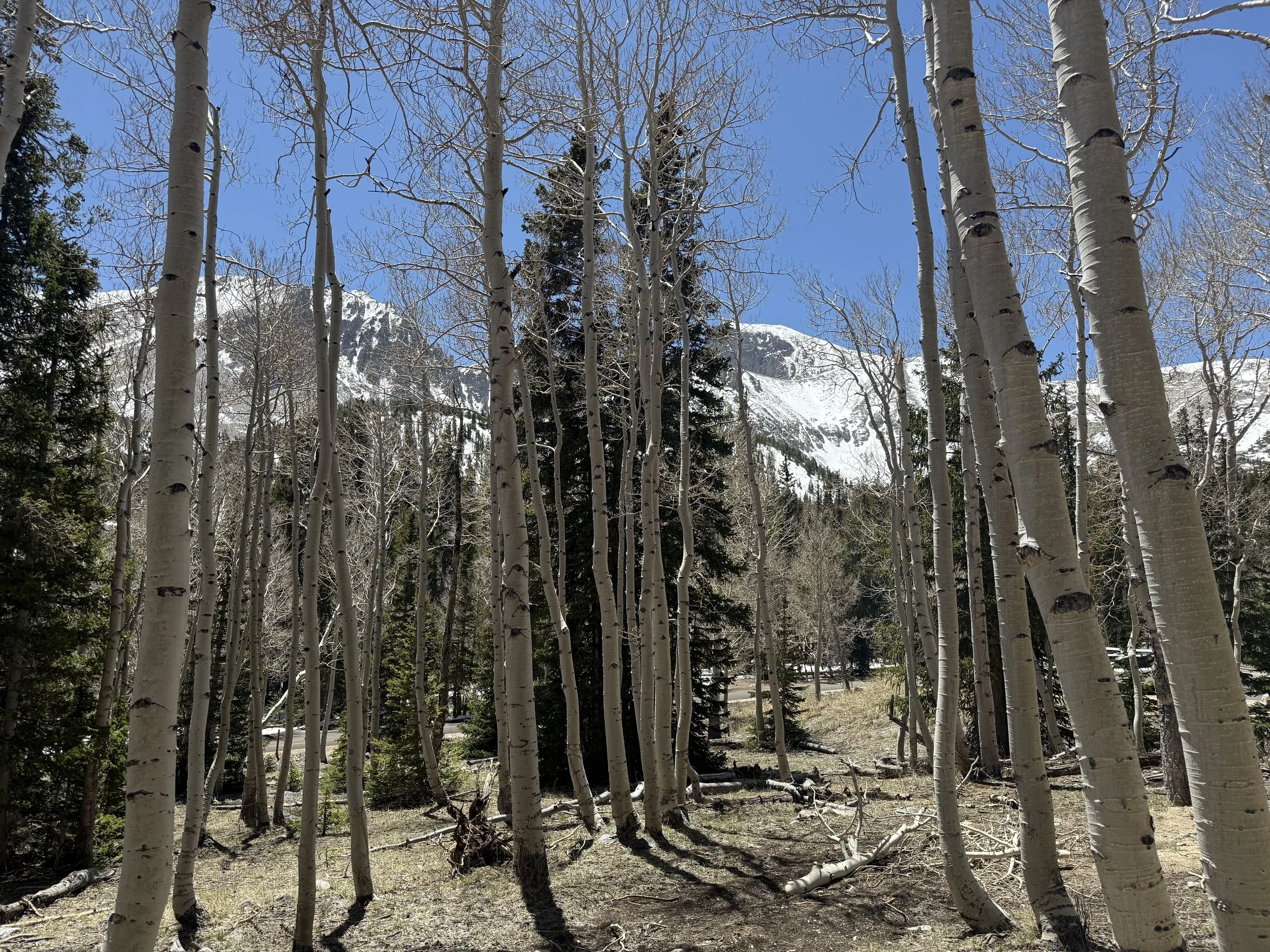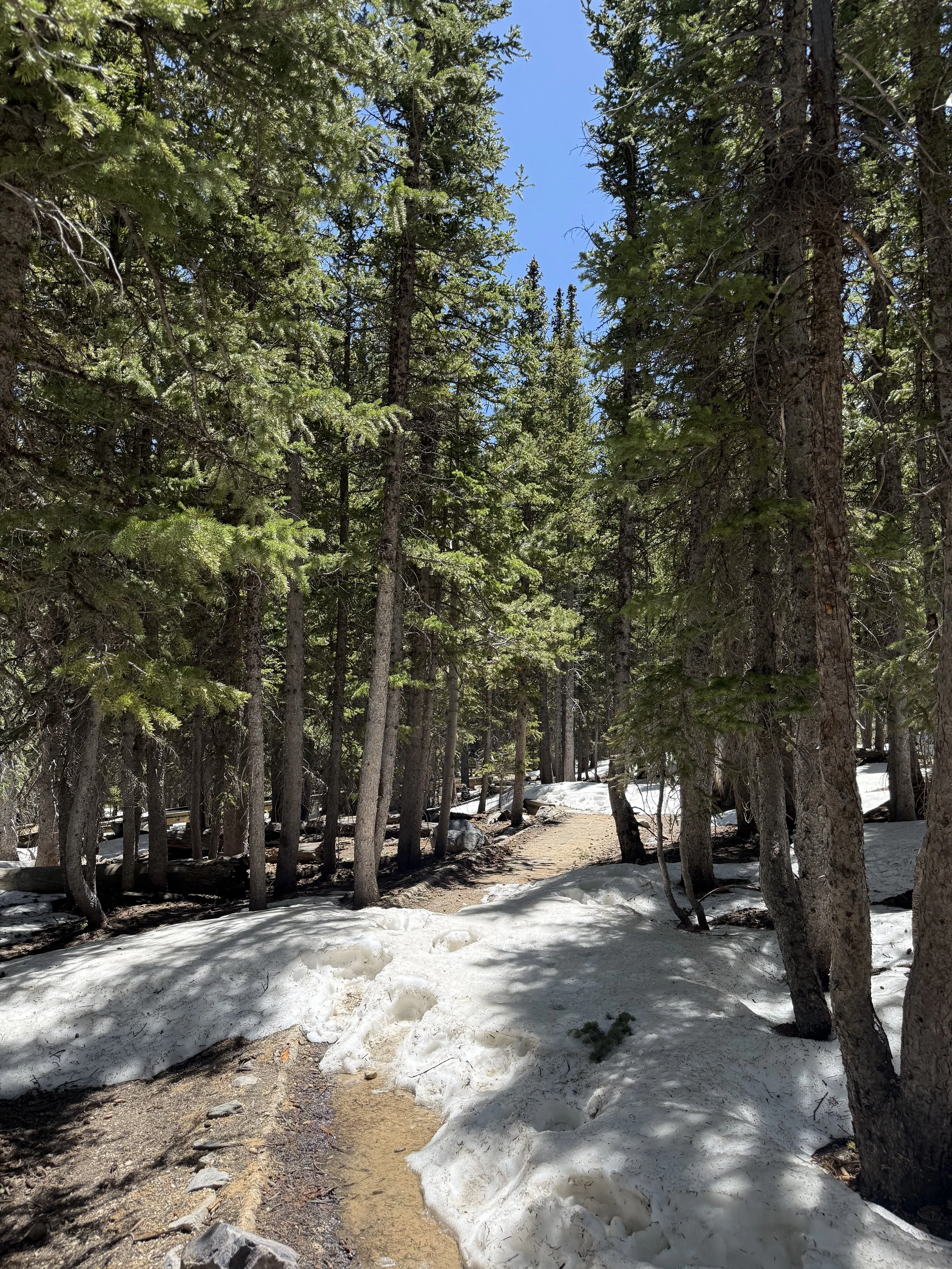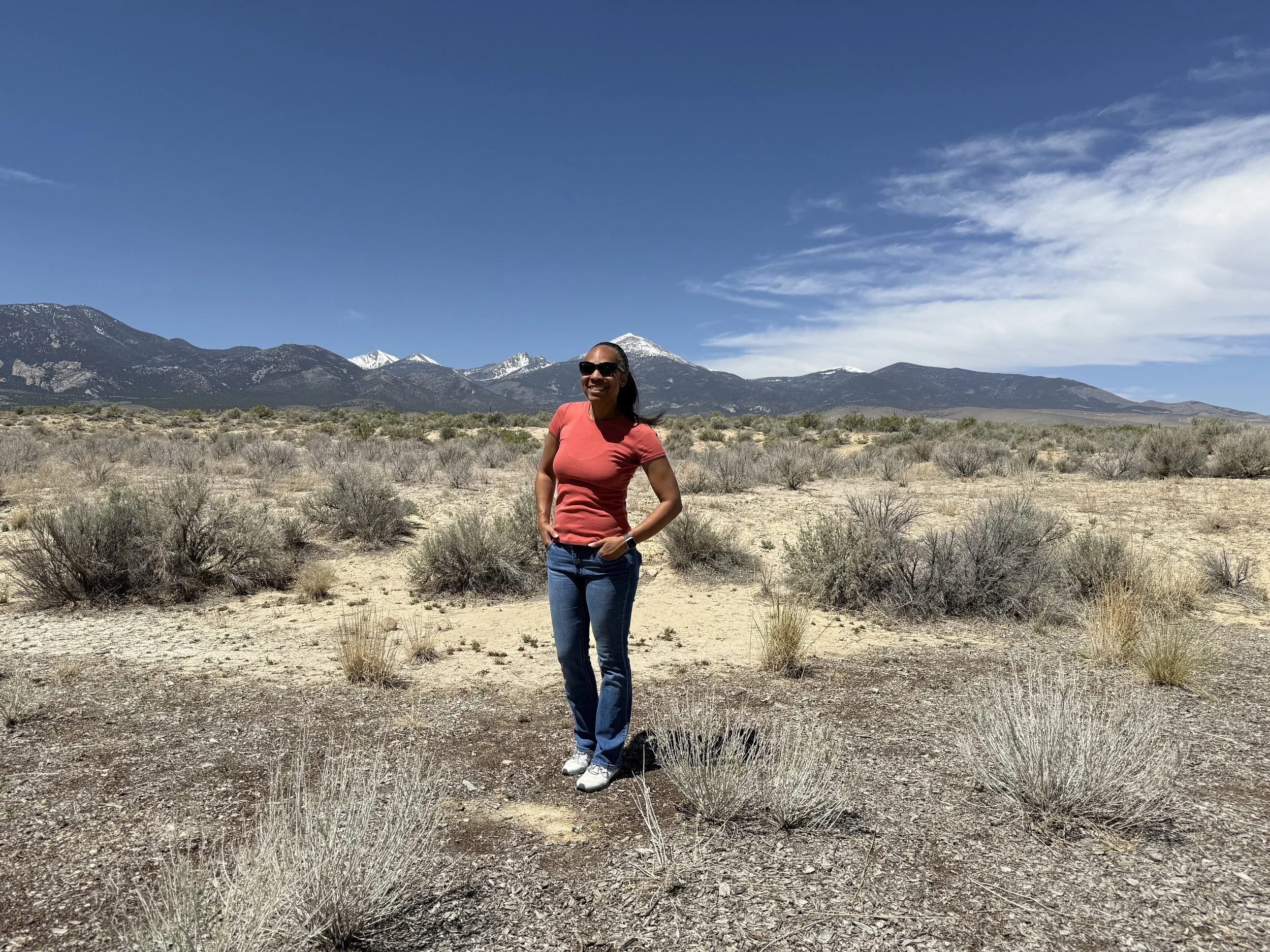#28 Great Basin National Park, Nevada
Tucked away in eastern Nevada, Great Basin National Park often flies under the radar — and that’s exactly what makes it so special. It’s one of the least visited national parks in the country, but for those who make the journey, it offers a rare kind of solitude and wonder. Here, you’ll find some of the darkest night skies in the U.S., a massive limestone cave system, and ancient bristlecone pines — some of the oldest living trees on Earth.
Like my trip to the Grand Canyon, my Great Basin adventure began in Las Vegas. The drive to the park is long (about 4 hours and 45 minutes), but it’s a lovely one. You watch the landscape transform as you go: dry desert plains slowly give way to green hills, and eventually, snowcapped mountains rise on the horizon. Along the way, you pass through wildlife refuges, small towns, and long stretches of empty highway where you feel like the only car for miles.
A word to the wise: get gas when you can. Because of the park’s remote location, gas stations are few and far between — and you don’t want to risk running low.
When I arrived, I did what I always do at every national park: I got my National Parks Passport stamped at the visitor center and made sure to take a photo by the park sign. It’s a little ritual, but one that makes each visit feel official.
Next came the drive up Wheeler Peak — a 12-mile switchback road that was both beautiful and, honestly, a bit nerve-wracking. As I climbed up to 10,000 feet, the landscape changed dramatically. The desert faded away, replaced by a lush green forest, cold mountain streams, and patches of snow still clinging to the ground even in late spring. The air shifted too, from dry and dusty below to crisp and cool up high. It was like watching the seasons change right in front of me.
A Bit of History
Great Basin National Park was officially established in 1986, but its natural story spans millions of years. The “Great Basin” refers to a massive stretch of the western U.S. where water doesn’t drain to the sea but evaporates or seeps underground. Indigenous peoples, including the Shoshone and Paiute, have called this region home for thousands of years, leaving behind rock art, tools, and cultural traditions still honored today.
One of the park’s standout features, Lehman Caves, was discovered in the late 1800s by Absalom Lehman. Tourists quickly became fascinated with its dramatic underground rooms, packed with rare shield formations, stalactites, and stalagmites. Today, the caves remain a top visitor draw, but above ground, the park offers even more: alpine lakes, ancient bristlecone pine groves, and the rugged summit of Wheeler Peak, Nevada’s second-highest mountain.
Visitor Center Information
📍 Great Basin Visitor Center
5500 NV-488, Baker, NV 89311
The main visitor center is located just outside the park in the small town of Baker. This is where you’ll want to stop first — grab a map, talk to a ranger about trail conditions, browse the exhibits, and (if you’re like me) get your National Parks Passport stamped.
There’s also the Lehman Caves Visitor Center inside the park, which handles cave tour tickets and ranger-led programs. If you want to explore the caves, book your tour in advance — spots fill up, especially during peak season.
Entrance Fees and Passes
Here’s a pleasant surprise: entry to Great Basin National Park is free.
The only thing you’ll pay for is cave tours, which usually cost between $12–$15 per adult depending on the tour length and type. Reservations are highly recommended.
Top Sights and Highlights
Lehman Caves — The most popular attraction in the park, these marble caves are packed with rare and delicate formations you can only see on a guided tour.
Wheeler Peak Scenic Drive — This 12-mile drive climbs dramatically from the desert floor to the alpine zone, offering panoramic views and access to top trailheads.
Stargazing Areas — As an International Dark Sky Park, Great Basin is one of the best places in the U.S. to see the Milky Way, meteor showers, and countless stars.
Bristlecone Pine Groves — These trees are among the oldest living organisms on Earth, some over 5,000 years old.
Wheeler Peak Campground — A beautiful high-altitude basecamp perfect for campers, hikers, and anyone wanting to soak in the cool mountain air.
Best Hikes
Bristlecone Pine Trail (2.8 miles roundtrip, moderate)
Hike through a grove of twisted, ancient bristlecone pines — a truly humbling experience.
Alpine Lakes Loop (2.7 miles roundtrip, easy-moderate)
A beautiful loop that visits Stella and Teresa Lakes, two serene alpine lakes tucked beneath Wheeler Peak.
Wheeler Peak Summit Trail (8.6 miles roundtrip, strenuous)
For those wanting a challenge, this hike takes you to the summit of Wheeler Peak at 13,065 feet. Expect breathtaking panoramic views — and thinner air!
Lehman Creek Trail (6.8 miles roundtrip, moderate)
A quieter trail that follows Lehman Creek through meadows and forest, perfect if you want to avoid the crowds.
Best Places for Photography
Lehman Caves — Capture the surreal beauty of the underground formations.
Alpine Lakes — Reflective, peaceful, and ringed with pine trees.
Bristlecone Pines — Gnarled, twisted trees that seem to defy time.
Mather Overlook — A stunning roadside viewpoint with wide-open views of the mountains and desert.
Night Skies — On a clear night, the Milky Way steals the show — bring a tripod!
Accessibility Notes
• Both visitor centers are wheelchair accessible.
• Some sections of the Lehman Caves tours are accessible; call ahead to check which tours work best.
• The Wheeler Peak Scenic Drive offers several accessible viewpoints without needing to hike.
• Most trails are rugged and not suitable for wheelchairs or strollers, but there are short, flat walks near the visitor centers.
Tips
Best Season: Late spring through early fall — keep in mind, snow often lingers on higher elevations even into early summer.
What to Pack: Bring water, snacks, layers (it can be cold up high), and sun protection.
Supplies: Stock up before you get to Baker; it’s a tiny town with very limited services.
Cell Service: Expect little to no reception in the park — download maps and plan ahead.


